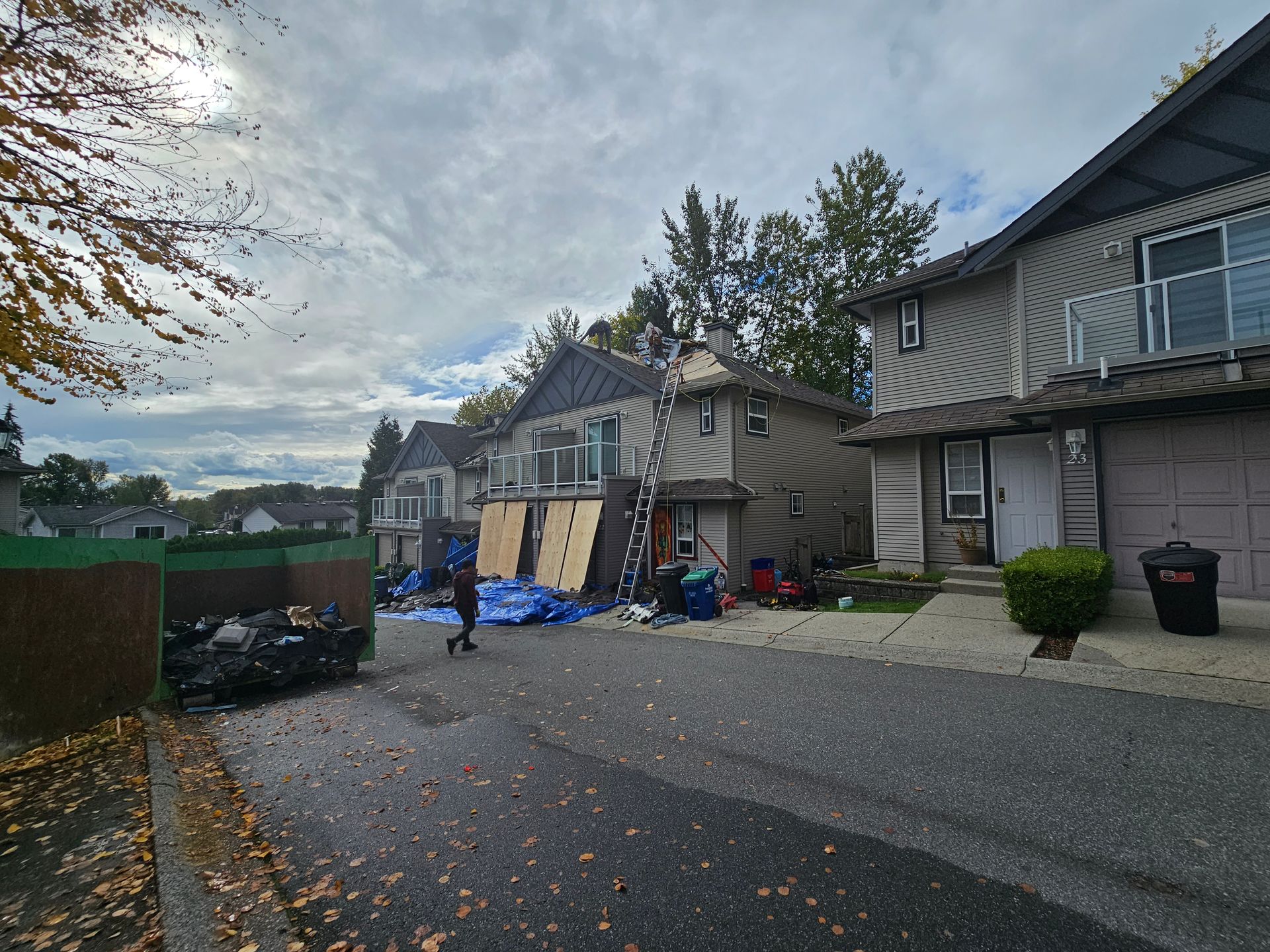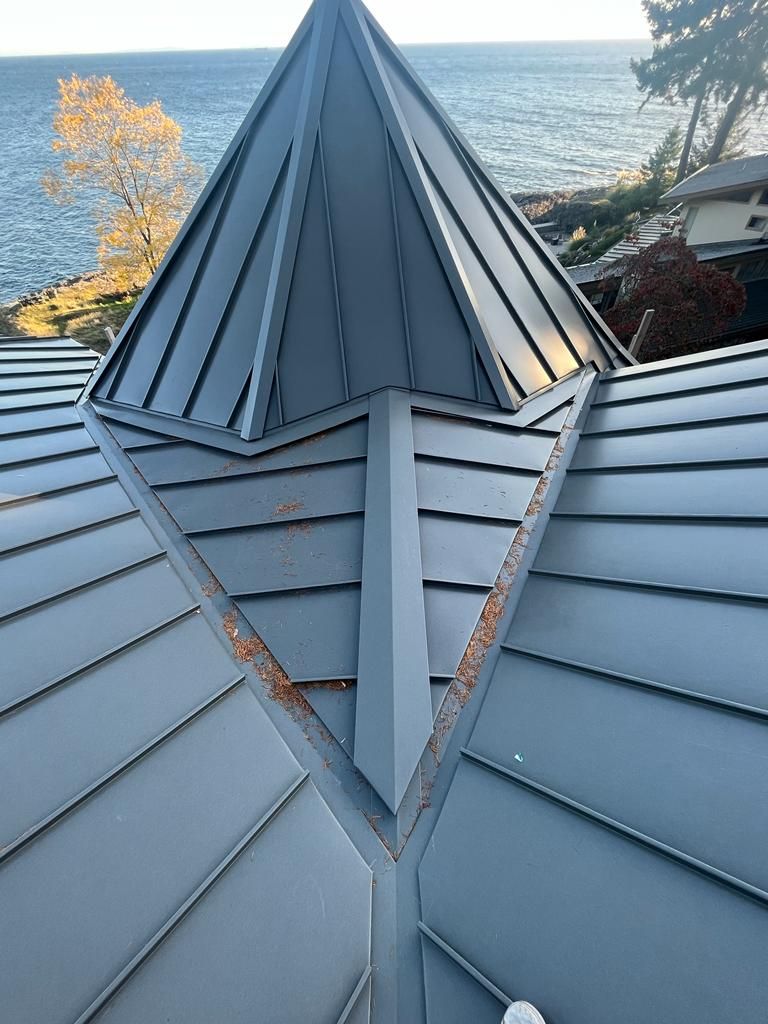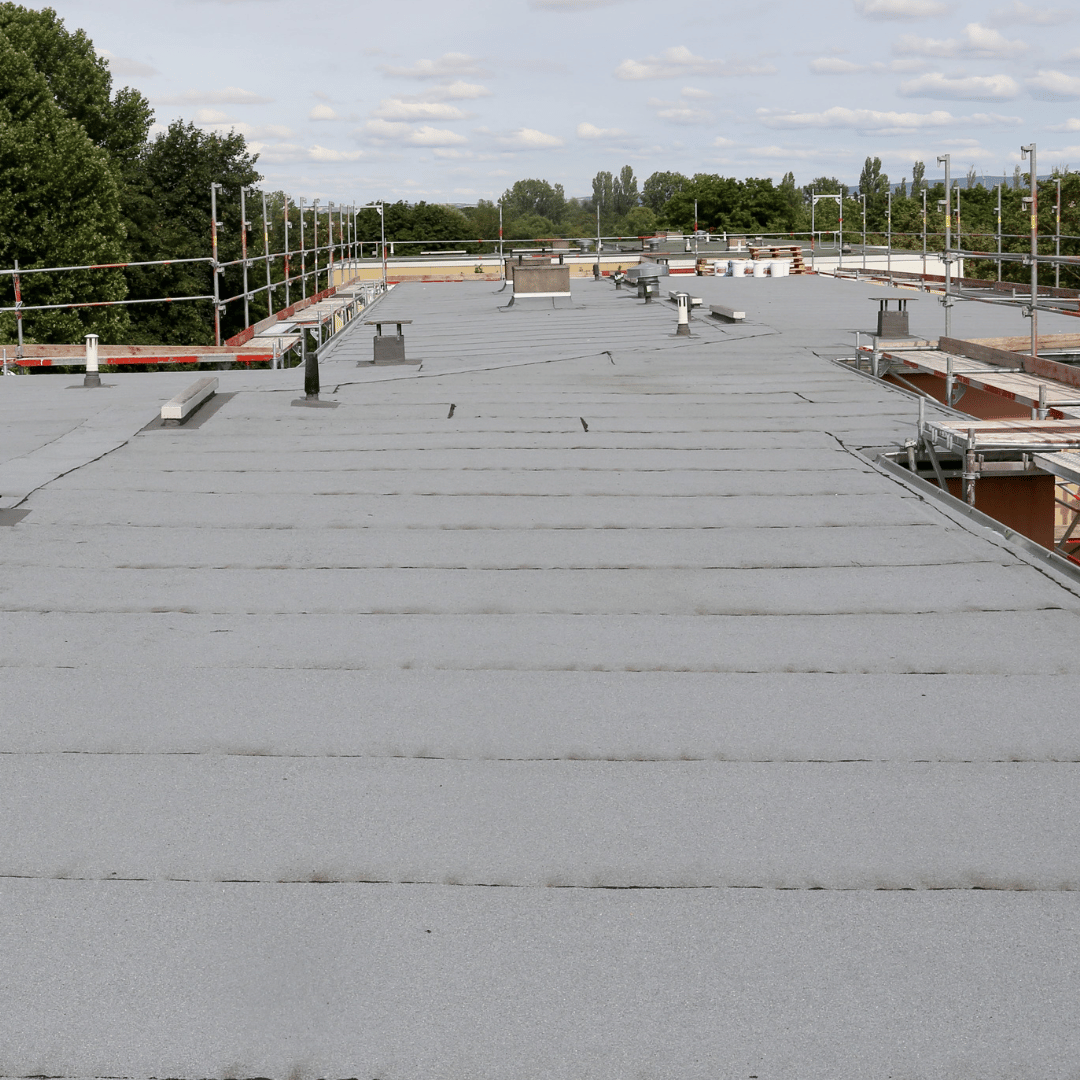Call Today
12233 92 Avenue, Surrey, British Columbia V3V 7R9, Canada
Reach Out
CALL US TODAY · 604-358-3436
Ice Dams in BC Winters: How to Protect Your Roof
Don't let BC winters catch you off guard—join me in turning your roof into a fortress against ice dams with real-world advice
Hey there, it’s Harman here from Paragon Roofing BC. I’ve spent more winters on rooftops than I'd care to admit, but each season adds to my perspective on what works—and what definitely doesn’t—when it comes to dealing with ice dams. Living and working around Vancouver, Surrey, Delta, and our neighboring communities, we all know the weather can be a bit moody. One day it’s soggy rain, the next there’s a chill so sharp it reminds you to double-check your thermostat. In that shuffle, ice dams can form, often turning an otherwise peaceful winter day into a scramble to protect your roof. Below, I’d like to share everything I’ve gleaned over the years, weaving in some real-world experiences and practical approaches for handling these pesky formations. You’ll see exactly why ice dams happen, how they damage your roof, and what you can do right now—or later, if you’re reading this in the midst of a surprising January thaw—to stay safe and keep your home snug.
What Exactly Is an Ice Dam?
An ice dam is basically a ridge of ice that typically takes root at your roof’s edges or in your gutters. Instead of snowmelt draining as it should, water pools behind the ice barrier. When that water pools, it finds every nook and cranny to sneak under shingles. If there’s a weak spot—like a seam or an old, worn-out shingle—it’ll exploit it, working its way down through the roof deck. As if that’s not enough, once inside, it can trickle into insulation, drywall, and other materials. It’s amazing how a relatively small layer of ice can create such a big headache. After tackling hundreds of such scenarios firsthand, I can say with certainty that prevention is far easier (and cheaper) than cleanup.
Ice dams are sneaky, though. Sometimes you don’t realize you have one until you spot a drip of water from the ceiling. Other times you’ll see a literal “dam” or giant icicles forming on the gutters. If you’re in Vancouver or further out in the Fraser Valley, you might see these forms of ice just about anywhere, especially after we get a good snowfall followed by a sudden drop in temperature.
Why Do Ice Dams Even Form?
In BC, the winter weather can vary widely, with mild wet days alternating with colder snaps. When the upper portions of your roof get warmed from inside the house (often because of heat escaping through the attic), the snow starts to melt. That water then slides down the roof to the unheated edges. The edges remain cold enough to freeze that water, and—voilà!—you have an ice dam.
I’ve seen plenty of Vancouver homes that are only lightly insulated, or older heritage houses in places like Surrey, with attic insulation that’s seen better days. It’s easy for heat to escape those attics. Pair that with poor roof ventilation—maybe older vents or none at all—and you’re practically rolling out the red carpet for ice dam formation.
My Experience with BC Winters and Ice Dams
Growing up around these parts and later working on roofs year-round, I’ve seen that Vancouver’s climate is unique. Temperature swings aren’t as dramatic as in some of Canada’s colder provinces, but it’s the transitions—especially from rain to snow to melting back to rain—that keep us on our toes. For example, you might wake up in Surrey to see a couple of inches of fresh snow. You grab your coffee, enjoy the sight of that beautiful white blanket, only for the temperature to climb by midday, turning it all into slush. By nightfall, things freeze again. Next morning, ice forms at the edges, and you’re left wondering why water is no longer flowing off the roof the way it should.
After years of climbing up ladders and seeing repeated patterns, I can confirm that these day-night temperature fluctuations are a prime reason for ice dam development. It’s not that we get monstrous snow all winter—sometimes we only get a handful of days with any accumulation—but the rapid melting followed by freezing can be downright tricky. And that, more than any major snowfall, is where a lot of the trouble lies.
The Real Damage Ice Dams Can Cause
Ice dams are more than a rooftop annoyance. I’ve visited homes where entire gutters collapsed under the weight of ice, leaving behind a bent mangled mess. Others found stains creeping across their ceiling, forcing them to repaint and sometimes replace sections of drywall. Then there’s the hidden menace: once moisture seeps into the attic, it encourages mold growth if not addressed promptly. Mold is definitely not something you want circulating in your indoor air.
Beyond that, water infiltration can cause deterioration in wooden structural elements. Over time, wood rot can compromise your roofing deck, meaning the next big storm might lead to leaks, or worse. While it’s no fun dealing with these issues, it’s important to know what’s at stake. The plus side? Knowing the potential damage helps underscore why it’s so important to put in the effort now, rather than waiting until you have to mop up a puddle in your living room.
Building Expertise: Preventing Ice Dams
At this point, you might be thinking, “All right, I get it—ice dams are not my friend. So how do I keep them away?” There are four main steps I share with friends, neighbors, and clients who ask for advice: improving insulation, checking ventilation, sealing air leaks, and consistent roof maintenance.
Insulation First
The biggest culprit for ice dams is often inadequate attic insulation. When the attic is too warm, snow on your roof melts from the top. If you suspect your attic insulation is insufficient, consider adding more. It doesn’t have to be rocket science. If you can see the joists easily, it’s often a sign the insulation is too thin. Adding quality insulation is an investment with both winter and summer benefits—warmer in the cold months and cooler in the hot ones.
I’ve personally been involved in countless scenarios where simply bumping up the insulation was enough to drastically reduce ice dams. Better insulation means less heat escapes into the attic, which in turn reduces the likelihood of uneven melting.
Ventilation Check
Proper roof ventilation is like letting your house breathe. If hot air is stuck inside the attic, it continues to melt snow up top. Good intake vents along the eaves and exhaust vents near the ridge or roof peak help keep things balanced.
It’s also worth examining soffit vents to ensure they’re not blocked by debris or insulation. I’ve climbed into more than a few attics only to find the soffit vents sealed by old insulation. Once cleared, you can almost feel the improved air circulation. It’s one of those invisible upgrades that pays huge dividends.
Sealing Air Leaks
Attics often have hidden gaps—around wiring, plumbing vents, or chimneys—where warm indoor air escapes. These can be sealed with caulking or spray foam. Even modest gaps add up over time, continuously allowing warm air to rise.
I always compare air leaks to tiny holes in a balloon. Each hole might be small, but in aggregate, they let a lot of air out. Plugging those holes helps maintain a more stable attic temperature, which in turn minimizes snow melt at the roof level.
Routine Roof Maintenance
Every fall (or really, any time you can manage), it’s a wise move to clean your gutters and downspouts. Removing leaves and debris ensures that when snow melts, there’s a clear path for water to drain away from your home.
While you’re up there, do a quick shingle inspection, too. Look for any missing or damaged pieces. Even a seemingly minor missing shingle can become a weak spot that water exploits. Addressing small issues can save you a future headache.
Temporary Fixes and Quick Advice
Sometimes winter sneaks up before you get a chance to tackle deeper attic or roof improvements. If you find yourself facing an ice dam in progress, there are a few short-term tactics. I’ve had folks ask, “Should I chip away at the ice?” My advice: proceed with caution. Smacking your shingles with a hammer is more likely to damage them than clear the ice effectively.
Instead, you can try using a calcium chloride ice melt product specifically designed for roofs—just be sure to avoid rock salt, which can harm shingles and vegetation below. Another hack I’ve shared involves filling an old stocking or pantyhose with calcium chloride and gently placing it across the dam so the ice melts in a controlled channel. It might look a bit silly, but it can save you a real hassle.
Still, these are quick remedies—like band-aids. They address the immediate issue but don’t fix the underlying cause. Once spring arrives, consider a full review of your insulation, ventilation, and roof condition to set yourself up for next winter’s challenges.
My Authority in Roofing and Local Know-How
I’ve been on roofs across Metro Vancouver in every type of weather, from sudden hailstorms to sticky summer heat waves. Each experience added another layer of understanding about how our local conditions affect roofing systems. I’ve seen brand-new developments in Surrey that needed more insulation than the builder provided. I’ve also worked on older homes in places like Delta where the roofing structure was strong, but the ventilation system was outdated. Through it all, my guiding principle has been the same: keep water outside, keep the inside warm and dry, and make sure any changes are done safely and effectively.
That’s really the essence of authority on a topic—you gather knowledge by doing. I've personally installed and fixed roofing systems with my team in different corners of BC’s Lower Mainland. With each project, I've learned what materials hold up best under our wet winters, how to handle complicated attic setups, and which building codes help us ward off future issues.
Building Trust: A Shared Responsibility
When it comes to your home, it’s not just you or me alone. We share in making sure your roof is sound. From ensuring the attic stays cooler than your living space to verifying that your venting is unobstructed, every little step plays its part. Trustworthiness in roofing, to me, means laying out the facts, clarifying risks, and avoiding shortcuts that compromise long-term performance.
It also helps to keep an eye on your roof, especially after a snowfall. If you notice an icy buildup at the edges, handle it carefully. Set a schedule to clear snow from the roof if it piles up heavily. Some folks in Vancouver never think to remove rooftop snow because it’s rare for it to stick around long. But in those unusual years when we get a heavier snowfall, being mindful can prevent problems. If you’re not comfortable climbing up there, consider a roof rake, which you can often use from ground level. Think of it like brushing off the snow from your car windshield—just bigger, and hopefully not as cold on your hands.
The Human Side of It All
I’ll be honest: standing on a cold rooftop with a shovel or a pair of heat cables in hand isn’t exactly the highlight of my winter. It’s not like we wait all year to slip on a harness and go hack away at ice. But these issues pop up, and tackling them properly can save homeowners from major headaches down the road. Over the years, I’ve grown to appreciate the quieter moments up there too—looking out over a frosty Vancouver skyline, or maybe watching the sunrise over the Fraser River if I’m up in Delta or Surrey. It’s experiences like these that remind me we’re all connected by the same climate, the same environment, and the same desire to keep our homes safe and comfortable.
Plus, let’s be real: the Lower Mainland can throw some unpredictable weather at us. By preparing for the worst—like an unexpected two-week cold snap—you’ll sail through winter with far less stress. We can’t predict everything (I’m not about to give up my day job and start forecasting the weather on TV!), but a little proactive planning makes all the difference.
Bringing It All Together
Ice dams might seem trivial at first—just icicles dangling from the roof’s edge—yet they can lead to serious consequences if ignored. Personally, I’ve replaced more than my fair share of water-damaged ceilings and roof decks, so I know how critical it is to nip these issues in the bud. Here’s a brief recap of what helps:
- Start with the attic: Adequate insulation and well-sealed air leaks keep heat where it belongs, preventing the top portion of your roof from warming up enough to melt snow prematurely.
- Check ventilation: Proper airflow in your attic levels out temperatures and helps reduce moisture buildup.
- Ongoing roof maintenance: Clean gutters, inspect flashing and shingles, and be ready for sudden weather changes.
- Handle ice dams safely if they appear: Use suitable products (like calcium chloride) and gentle methods instead of aggressive chipping or rock salt.
From one homeowner to another, I recommend addressing these areas step by step. If the idea of crawling in the attic or climbing onto the roof during a February freeze doesn’t appeal, that’s totally understandable. You can still take note of these points and tackle them once the weather cooperates. If you do find yourself dealing with an active leak, place a bucket under the drip, and check your attic to see if you can temporarily halt the flow of warm air. Then, when things thaw out or you have a moment, follow through with the longer-term fixes that truly protect your home.
Winter in BC can be beautiful—some days you’ll see bright reflections of snowy mountains from your window, while other days you’ll be fishing your slippers from the water puddle by the door (thanks to the rain). Let’s keep the ice where it belongs: in our freezers or on the local hockey rink. Your roof deserves better. And if you ever have questions or want another set of eyes on your setup, just remember: everyone’s been there, it’s part of living here, and there’s always a solution waiting to be put into action. Stay warm, stay safe, and let’s make ice dams a thing of the past.

Our Roofing Blog
Have more questions about roofing?
Check out our FAQs or give us a call today to speak to an expert roofer in Vancouver Lower Mainland, BC. We're here to help our neighbours make educated decisions about their roof. For our team, we value helping clients save money while making their roofs last.
All Rights Reserved | Paragon Roofing BC | Web Design & SEO by Piiper Digital Solutions




